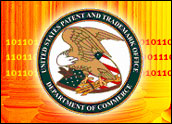
The Bilski v. Kappos Supreme Court case was the latest skirmish in the ongoing war over the scope of patents. On the one side are purists who want the patent statute open to new technologies, and on the other are those who wish to see the patent laws more curtailed — and particularly that the patentability door be closed on certain technologies. In a highly fractionated opinion, the Supreme Court refused to close that door but still left us in limbo.
For decades, the Supreme Court and lower courts, such as the Court of Appeals for the Federal Circuit, have been grappling with innovations of the Information Age (as well as the life sciences and other advances). By their very nature, these new software-related inventions are less tangible than other inventions, such as mechanical devices, electronic devices, biotechnological products and other more physical things. This new technological advancement, however, has unquestionably transformed our society, and America leads the world in the area of software.
A History of Encapsulation
Since its 1972 decision in Gottschalk v. Benson and the 1978 decision in Parker v. Flook (Justice Stevens opinion), the Supreme Court has endeavored to encapsulate patents in software, limiting their scope. In Benson and Flook , the concern was whether the patent claims were preemptive, i.e., did the patent applicants try to make the usage of a mathematical algorithm exclusive, taking something from the common fund of knowledge inappropriately?
In both cases, the court decided against the patent applicants. These early decisions unfortunately coincided with the birth of the software industry and created the impression that software technological advances were not patentable. Even the 1980 Diamond v. Chakrabarty case failed to correct this industry viewpoint, despite the broad Court proclamation that American invention covers “anything under the sun made by man.” As the Information Age came into full swing in the ’80s and ’90s, with the introduction of the PC and software applications and interfaces, the era then exploded with the Internet, a tool that continues to transform society.
In 1998, the Federal Circuit, responding to the growing demands of innovators in the new technologies of software and the Internet, issued their monumental fin de siecle opinion State Street Bank, opening the floodgates of innovation for the patenting of software and its diverse applications, particularly in the business sector.
The aftershocks of that opinion of Chief Judge Rich have been rippling ever since. To many, the Federal Circuit went too far and unleashed a torrent of bogus patenting. Many in the press seized on various silly patents issued by the Patent Office as exemplary of the ridiculousness of it all. Despite the fact that the Patent Office, severely underfunded and understaffed (a state in which it remains today), was trying to control quality, some patents were and are issued that should not be issued. Nonetheless, the vast majority are correctly issued, and mechanisms are in place to invalidate any bogus patents.
Many Hurdles
Still, the impression that the patent system is out of control pervades Congress and the media to this day. With President Obama’s appointment last year of David Kappos as Undersecretary of Commerce and Commissioner, the patent bar feels that this negative press can hopefully be abated since the patent system is not broken. Indeed, most of the patent bar feels that the Patent Office is functioning reasonably well amidst ever-increasing technological changes, although some tweaking is needed, e.g., fee diversion. The Supreme Court Justices are cognizant of these controversial issues, and many have expressed their strong personal viewpoints on the patent system. Outgoing Justice Stevens and Justice Breyer, in particular, have clear designs to curtail patenting in the software and business methodology sectors. Their views are set forth plainly in the Bilski decision. Even Justice Kennedy, writing for the majority, indicated that “some business method patents raise special problems in terms of vagueness and suspect validity” that could “chill” the industry. The Court Opinion states on the one hand that business methodologies are acceptable and on the other that they may not be.
Turning to the case itself, the Bilski invention involved a methodology wherein buyers and sellers in the energy market (or any commodity) could hedge against price fluctuation. The claims at issue were quite broad, and prior art abounded to prevent the “invention” from seeing the light of day as an issued patent. As noted by Justice Stevens, Assyrian merchants practiced hedging techniques many thousands of years ago.
Of course, Justice Stevens’ distaste for software patents (perhaps all patents) colors his analysis, since there are several other significant discrete hurtles to prevent the broad claims of Bilski to become a patent.
First, the invention must be novel, and if the claimed invention covers something already known, then no patent can issue in view of the anticipation by others. The wealth of human knowledge stands against any application for patent in this manner.
Second, the invention cannot be an obvious extension over what is known, another significant prohibition preventing the patenting of trivial advancements over already-known inventions.
Third, the invention must be described with particularity, e.g., to show that the inventor actually understands and possesses the invention, and that the patent text sets forth a detailed operational description of the invention. This is part of the quid pro quo of the patent system. In exchange for a limited exclusion period after the patent grant, if any, the patent applicant agrees to fully disclose their idea in writing, i.e., the patent application. In this way, both the inventor and society benefit — the invention so described will quickly enter the fund of human knowledge, and after the period of exclusivity, it will be free for all to use, instead of remaining as a trade secret indefinitely.
Despite these rigorous requirements for any patent applicant trying to obtain a patent, there has been an effort to curtail inventions outright, i.e., before getting their chance to survive the gauntlet of the novelty, nonobviousness and description hurtles. In Bilski, as in Benson, Flook and several other cases, the issue focuses on eligibility to merely enter the gates of patenting possibility. In this case, the Patent Office rejected Bilski’s patent application on various grounds, including novelty and nonobviousness, but only the eligibility rejection (35 U.S.C. 101) made it to appeal.
The Federal Circuit, feeling the heat to do something, formulated a new criterion that all inventions satisfy a “Machine-or-Transformation” test, a new test that superseded all prior tests, such as the “useful, concrete, and tangible result” test articulated in State Street Bank. In short, to be eligible for patenting, an invention must be a physical thing (machine) or cause a physical transformation. Chief Judge Michel held that this Machine-or-Transformation test was now the “sole test” for patent eligibility. Judge Rader, now Chief Judge, instead felt that the new test was unnecessary since the existing bar against inventions being too abstract would suffice. In an effort to obtain clarity, the case went up on appeal to the Supreme Court, which granted cert. Dozens of interested organizations filed amicus briefs in the case, demonstrating the importance of the issue at hand. Justices Stevens and Breyer were chomping at the bit to get the case, but after considerable speculation, Justice Kennedy wrote the majority opinion.
Beyond the Bilski Basics
Although all of the justices agreed that the invention at issue was unpatentable, the opinion is fractionated, with justices joining various pieces of the opinion, and Justices Stevens and Breyer writing concurrences to elaborate their views hostile to patenting in the information sector. Justice Kennedy’s plurality decision held that the Federal Circuit’s Machine-or-Transformation test could not be an exclusive test under section 101, although subsequent tests could be propounded consistent with the Court’s precedent.
In particular, the court noted the express statutory guidelines to exclude inventions covering laws of nature, physical phenomena and abstract ideas, without the need for a new and more restrictive rule. Indeed, the Court chided the Federal Circuit taking carte blanche to devise or improvise an overly restrictive test, such as the Machine-or-Transformation test.
Nonetheless, the Court felt that the test may be “a useful and important clue” to determine patent eligibility, particularly inventions of “the Industrial Age … grounded in a physical or other tangible form.” Justice Kennedy thus acknowledged Chief Judge Rader’s concerns and steered clear of creating unnecessary uncertainty, as well as limiting further applicability of the case, to future innovations.
The Bilski opinion is similar to other recent Supreme Court cases, particularly, KSR and Festo, where the court negated the Federal Circuit’s attempts to implement bright-line rules to resolve subtle patent interpretation issues, such as obviousness, the doctrine of equivalents and now patent eligibility.
The Future of Patents
To many, the Supreme Court punted the issue and created more issues, e.g., in litigation. Although clarity would have been appreciated, the court, mindful of the minefield through which it was treading, desiring to avoid unforeseen aftereffects, such as those that chilled the software industry decades ago.
Indeed, what emerging technologies, driven by American ingenuity, would be excluded from patentability and thus be open to easy copying, by implementing a more restrictive eligibility test, as per Justice Stevens who would, for example, bar all business methodology patents? Also, the invention at issue here, with a claim quite abstract, was viewed by many as a poor vehicle for new law. With Justice Steven’s retirement, all eyes turn to Justice Sotomayor (and perhaps soon to Elena Kagan) to divine her intentions. As she joined with Stevens’ concurrence, the patent bar wonders if Justice Sotomayor, the only justice with experience with intellectual property (copyright), will follow in his footsteps.
With no bright-line rule and acceptance of the Machine-or-Transformation test as only one possible clue, patent practitioners now face some confusion as to what will transpire in the Patent Office, which has already indicated that the examiners continue to use the non-exclusive Machine-or-Transformation test to reject patent claims. For innovations in the less tangible realm, patent applicants are likely to be forced to aver that their innovations are not abstract ideas, after failing the Machine-or-Transformation test . Thus, expect more appeals as the examiners reject inventions as being abstract ideas, albeit with no further guidance on this. For licensing, patent holders are likely to face section 101 challenges to the patents under the license, and the constraints of MedImmune allow licensees to so challenge. Thus, expect some increased litigation in high-stakes areas with software and business method patents at the core.
The Supreme Court has been addressing more and more patent matters over the past decade, demonstrating the increasing importance of intellectual property to American commerce. Indeed, most of our exports involve innovations that are more information-driven and less tangible than the devices of the Industrial Age. As America forges ahead with new technologies, some which are entirely intangible, it is critical that we do not hobble innovation by thwarting patenting efforts. Although some argue that patents are irrelevant in some sectors, for many companies, especially start-ups, their chief and often only assets are ideas, and patents are the tool of art to protect the implementation of ideas.
Although Thomas Jefferson is often invoked in the context of patent protection, he was at heart a farmer and throughout his life hostile to banking and financial institutions. Jefferson also tolerated the patent system, more as a necessary evil than a tool for commerce, as noted by Justice Stevens. Although the Justices in Bilski invoked Jefferson, America has long ago graduated from the Industrial Age, with patenting improvements in plows, to lead in the Information Age, with the Internet as a backbone for many technological software-driven, business-related advancements.
Instead of revering backward-thinking Jefferson, perhaps the Justices should take note of Alexander Hamilton and his proactive and prescient steps to make America the financial and industrial power it is today. Mere abstractions should not be patented, but intangible inventions that bear on our success as a nation now and in the future must be protectable, provided that they are novel, nonobvious and descriptive — already highly restrictive hurtles. The emerging innovations of tomorrow should not be proscribed based on the ideas of the 18th Century.
Raymond Van Dyke is a technology attorney in Washington, D.C., who can be reached at [email protected].


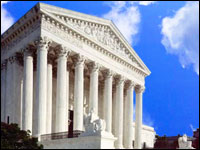
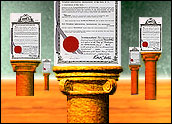
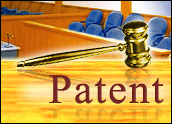
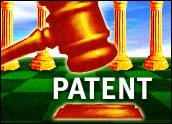


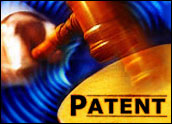

































Social Media
See all Social Media